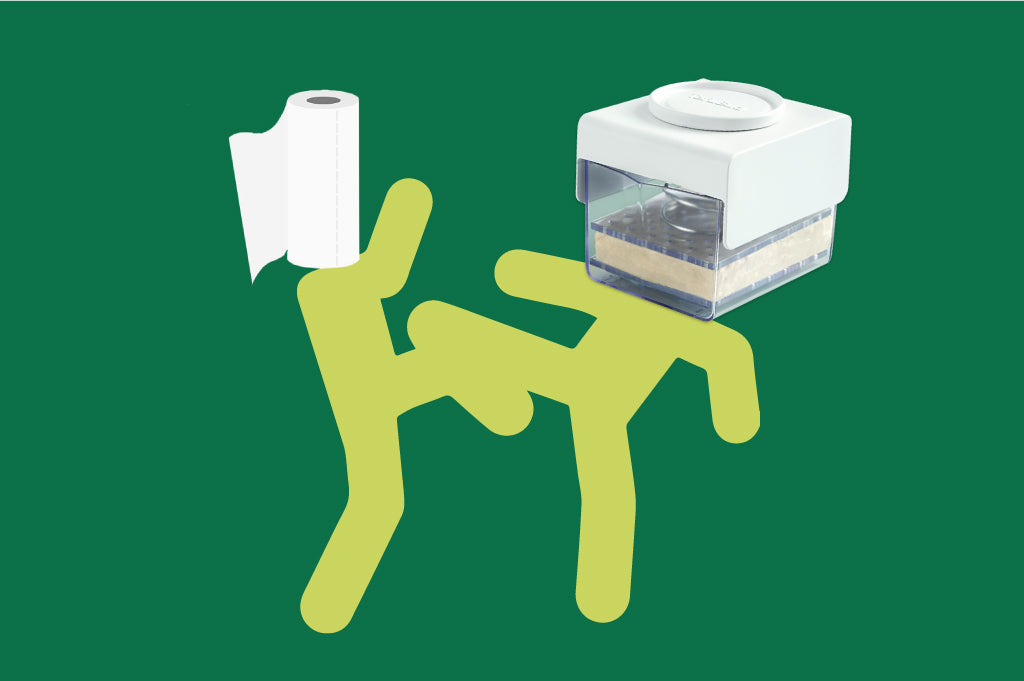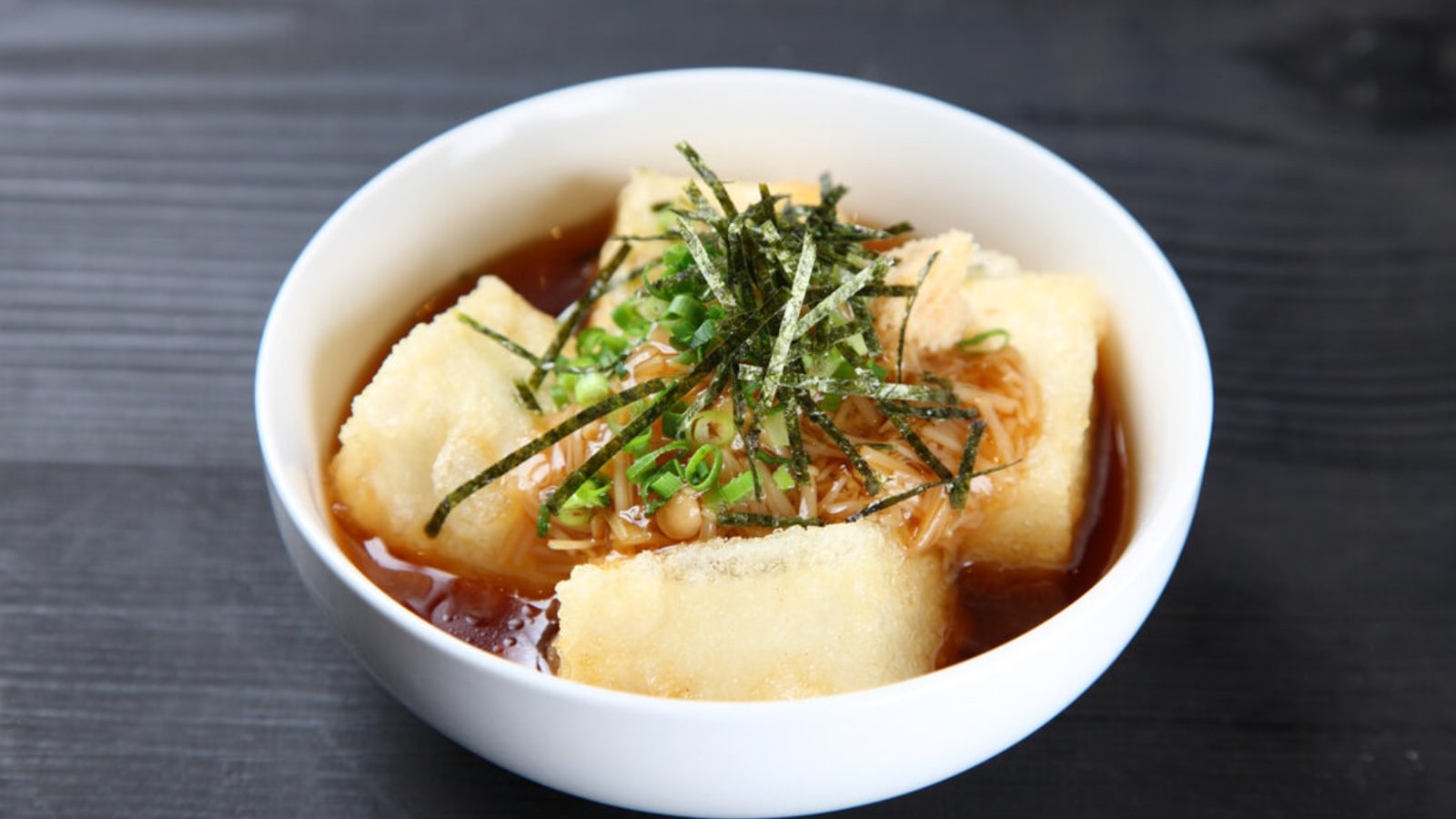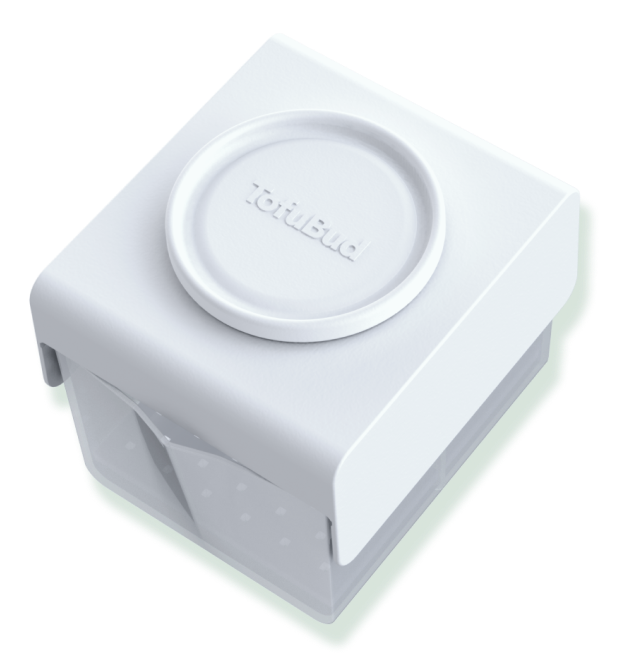One of our favorite easy Japanese appetizers is this Agedashi tofu, deep-fried to perfection and served with a savory dashi broth, fresh ginger, and a sprinkle of white sesame seeds. Follow our simple recipe below to enjoy one of the best dishes in Japanese cooking!
Though we love fried American foods, there’s something irresistible about the lightness that comes with Japanese techniques for frying their foods.
One of the best examples of this is in Agedashi tofu, a popular appetizer you can find on the menu at most Japanese restaurants. The fried tofu has a mild taste and crunch that pairs well with flavorful, fresh ginger, onion, and umami-filled Agedashi broth.
While it’s traditionally an appetizer, you can easily pair this high protein dish with some extra vegetables and grains for a nutritious, filling meal. Easily adjust the ingredients to make this recipe vegan to suit any plant-based diet!
Agedashi Tofu - Nutrition Information
Serving Size: ½ recipe of Agedashi tofu
Calories: 83 kcal; Carbohydrates: 20 g; Protein: 1 g; Fat: 0 g; Sodium: 1135 mg; Fiber: 0 g; Sugar: 10 g.
*Nutritional values are estimates only and will vary with preparation methods.
Japanese Fried Tofu- FAQ
What is Agedashi Tofu?
Agedashi tofu is one of the most famous Japanese tofu recipes. Tofu pieces are dusted with katakuriko potato starch and then deep-fried and topped with a savory broth, ginger, and onion.
What is dashi?
Dashi is a Japanese cooking stock made by simmering edible seaweed and fish flakes in water. You can make it from scratch or find instant dashi powder in most international grocery stores.
Is Agedashi vegan?
Traditional Agedashi isn’t vegan, as it contains fish-based dashi stock. If you’d like to make this Agedashi recipe vegan, you can use vegan dashi made from shiitake mushrooms instead.
All of our other recipe ingredients are plant-based, so the swap is relatively simple!
What kind of tofu should I use for Agedashi Tofu?
Agedashi’s deep-fried tofu recipe traditionally contains silken or soft tofu. While soft tofu is a great option, it’s pretty tricky, and frying silken tofu can lead to a massive mess in inexperienced hands.
We designed our recipe using firm tofu instead to make the frying process more manageable. It also gives the Agedashi tofu a firmer inner texture instead of the soft, creamy texture of the silken tofu. If you know how to deep-fry tofu well and feel comfortable using silken instead, we encourage you to try it!
Do I need to press the tofu?
If you’re using firm or extra-firm tofu, pressing is necessary to remove the extra moisture from the tofu block. Place it in a press for 15 minutes, or sandwich it between two heavy plates lined with paper towels for a minimum of 2 hours.
Is Agedashi tofu healthy?
Agedashi tofu is relatively healthy and makes a great source of lean, plant-based protein that contains all nine essential amino acids. It also offers some iron, calcium, manganese, phosphorus, copper, zinc, and vitamin B1.
That said, Agedashi tofu is deep-fried, and its broth contains some sugar, so it’s best enjoyed in moderation as part of any healthy diet.
What is Katakuriko?
Katakuriko is Japanese potato starch, often used to thicken sauces. If you can’t find Katakuriko at your local international grocer, try regular potato or cornstarch instead.
What can I serve with Agedashi tofu?
One of our favorite ways to serve Agedashi tofu is with deep-fried shishito peppers. Since you’ll already have the oil ready, they’re an easy addition to the meal and nicely complements the flavors.
To prevent the peppers from bursting as they fry, carefully pierce them with a sharp knife before placing them in the oil, then fry for 2-3 mins and remove them from the oil.
Final Notes on Agedashi Fried Tofu
Whether you try making this recipe with firm tofu or silken, learning how to fry tofu well will give you a beautifully crisp and crunchy outside with a soft, tender interior.
Serve with fried shishitos, Japanese potstickers, and a big bowl of steamed jasmine rice and enjoy!









Leave a comment (all fields required)